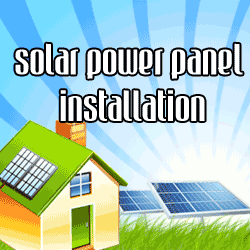
With Sustainable Design as the most important issue in Architecture today, designers are not only focusing on environmentally friendly materials but also educating their clients on the benefits of their design approach, their use of materials and their method of construction for reaching "Green" status.
The essential aim of Sustainable Design is to produce places, products and services in a way that reduces the use of non-renewable resources, minimizes environmental impact, and relates people to the natural environment. Architectural Fabric Structures have been in use since first introduced by Frei Otto in the early 1960's for temporary expositions. The major benefits were its minimal impact on the environment, its ability to enclose large spaces with little material and, of course, its aesthetic quality. Essentially, these early structures were fine examples of Sustainable Design. Over time, these structures have proven themselves as a permanent building material having been used in retail malls, airports, and sports facilities to name a few.
Everyone (Owner, Designer, Consultant, and Contractor) has an opinion on sustainability and when it comes to fabric structures one could argue that these view points can be broken down into three major components: Design, Materials and Construction.
When it comes to design, it is very important to understand why one wants to be sustainable. Some times it can be a philosophical approach from the owner's point of view, it could be mandated by market segment or there could be financial implications (banks, energy, etc.). I always like to say Design takes time and Green Design takes more time. Make sure your client realizes that too. Current design benefits of fabric structures directed at clients include: day lighting which reduces the need for artificial lighting, UV protection which reduces the risk of skin cancer, water collection which is then used for irrigating plants and other services, solar shading which reduces energy on a building's mechanical system and rarely considered but a growing trend of incorporating a fabric structure as an educational tool that teaches people about UV protection, recyclability, etc.
When it comes to materials and fabric structures, designers look to the three basic components: the structural members, the membrane and the perimeter tensioning system. The structural system is primarily made of steel but aluminum and wood are being considered more often. These materials all have many recyclable attributes and can be specified to be manufactured locally to the site. However, the most important factor in looking to be more sustainable with the structural members is in documenting your work. Saying something is recyclable and having the certified documents to prove it are two different things. It is hard to go back to the origins of the material if you intend to go for a LEED certification or need it for rebates and tax cuts. The perimeter tensioning system which includes tie downs and catenaries can be made with webbing belts, ropes of different compositions or wire rope depending on the load imposed on the structure. The membrane can come from all over the world and fabrication shops varying depending on the material chosen. Some materials have short life spans while others are made of recyclable materials. You can also find materials with 20 to 30 years life spans and are more environmentally friendly than ever before. The same can be said for the membrane as it is for the structural members; document your work and certify its origins. More research needs to be done on the amount of energy required to both make the material and fabricate the finished membrane. I think one will find another added benefit to fabric structures and sustainable design.
Lastly, construction benefits and fabric structures vary from location, place where components were manufactured and what is required to install these structures. Most tensioned fabric structures are designed, engineered and fabricated by "form finding" which means they are designed to be not only structurally efficient but manufactured and installed with little to no waste and energy. Architectural fabric is considered one of the lightest building materials and can create the largest building envelope. The result can have significant impact from plant to site. Less weight and packed to move, membrane, structural steel and components can be shipped to site with fewer trucks and erected with lighter equipment. Properly designed fabric structures may have little impact on the ground with smaller concrete foundations for compression loads and the use of utility cable anchor technology for tension loads. These efforts can have significant saving when the site is being used for temporary structures or deployable structures where reuse is inevitable.
Remember, sustainable design and the use of fabric structures is most successful when ALL three components are considered just keep in mind the views of others.
About the Author:
Samuel J. Armijos, AIA, is Architect and Vice President of FabriTec Structures, a brand of USA Shade and Fabric Structures. He is author of Fabric Architecture: Creative resources for Shade, Signage and Shelter. He resides in Fairfield, NJ. http://www.fabricarchitect.com
Article Source: ArticlesBase.com - Sustainable Views and Fabric Structures




0 comments:
Post a Comment